-
 Bitcoin
Bitcoin $117300
-0.11% -
 Ethereum
Ethereum $3713
0.78% -
 XRP
XRP $3.124
-0.30% -
 Tether USDt
Tether USDt $1.000
-0.03% -
 BNB
BNB $780.4
1.65% -
 Solana
Solana $185.0
1.22% -
 USDC
USDC $0.0000
0.00% -
 Dogecoin
Dogecoin $0.2342
2.26% -
 TRON
TRON $0.3171
0.98% -
 Cardano
Cardano $0.8166
1.07% -
 Hyperliquid
Hyperliquid $44.02
5.30% -
 Sui
Sui $3.949
6.96% -
 Stellar
Stellar $0.4335
2.55% -
 Chainlink
Chainlink $18.27
3.07% -
 Hedera
Hedera $0.2636
10.41% -
 Bitcoin Cash
Bitcoin Cash $553.6
6.11% -
 Avalanche
Avalanche $23.95
1.68% -
 Litecoin
Litecoin $112.8
1.50% -
 UNUS SED LEO
UNUS SED LEO $8.985
0.02% -
 Shiba Inu
Shiba Inu $0.00001397
3.44% -
 Toncoin
Toncoin $3.193
2.54% -
 Ethena USDe
Ethena USDe $1.001
-0.06% -
 Uniswap
Uniswap $10.42
4.00% -
 Polkadot
Polkadot $4.087
2.51% -
 Monero
Monero $323.7
-2.21% -
 Dai
Dai $0.0000
-0.02% -
 Bitget Token
Bitget Token $4.568
0.24% -
 Pepe
Pepe $0.00001250
2.88% -
 Aave
Aave $295.8
2.98% -
 Cronos
Cronos $0.1326
4.07%
什麼是區塊鍊和分佈式分類帳技術
區塊鍊是一種安全,透明的DLT,使用共享的,不可變的分類帳和共識機制來驗證各種網絡(公共,私人,允許)的交易,應用程序遠遠超出了加密貨幣以延伸到供應鏈管理和投票系統。
2025/03/24 20:00
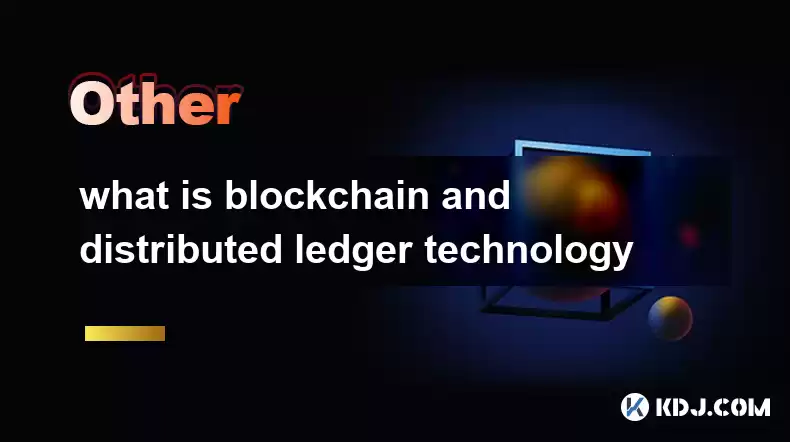
要點:
- 區塊鏈的核心功能:共享的,不可變的分類帳,以確保透明度和安全性。
- 分佈式分類帳技術(DLT):基礎技術使區塊鏈的分散性質。
- 共識機制:區塊鍊網絡如何同意交易的有效性。
- 區塊鏈的類型:公共,私人和權限,每個都有不同的應用程序。
- 加密貨幣以外的應用程序:供應鏈管理,投票系統等。
- 安全性影響:權力下放增強了安全性,但引入了新的挑戰。
- 可伸縮性和效率:持續發展以提高交易速度和成本。
什麼是區塊鍊和分佈式分類帳技術?
區塊鏈技術是一種分散,分佈式和公共數字分類帳,用於記錄和驗證許多計算機的交易。從本質上講,這是一個不斷增長的記錄列表,稱為塊,使用密碼學鏈接和確保。每個塊都包含一個時間戳和指向先前塊的鏈接,創建了一個難以更改或刪除的數據鏈。這種不變性是提供安全性和信任的關鍵功能。
分佈式分類帳技術(DLT)是包含區塊鏈的更廣泛的概念。 DLT是指在多個參與者中復制和共享的任何數據庫。區塊鍊是一種特定的DLT類型,它利用塊鍊和加密哈希鏈來保護數據。雖然區塊鍊是DLT的最著名的例子,但存在其他DLT架構,每個架構都有其自己的優點和缺點。 DLT的核心原則是權力下放,消除了中央權力管理數據庫的需求。
區塊鏈如何工作?
區塊鏈的關鍵方面是共識機制。這是網絡就新交易的有效性達成共識的過程,並將其添加到區塊鏈中。流行的共識機制包括在以太坊2.0中使用的比特幣和利用證明(POS)的工作證明(POW)(POW)。這些機制確保沒有任何一個實體可以控製網絡或操縱分類帳。
一旦驗證了交易,它將與其他交易一起捆綁成一個塊。然後將此塊添加到現有的區塊鏈中,創建永久且可驗證的記錄。加密散列可確保可立即檢測到塊的任何更改,從而保持整個鏈的完整性。分類帳的分佈性質意味著區塊鏈的副本在多個計算機上存在,從而極大地抵抗了審查制度或單個失敗點。
區塊鍊網絡的類型:
- 公共區塊鏈:這些都向任何人開放,允許任何人參與網絡,查看交易並創建新的區塊。比特幣和以太坊就是例子。透明度是一個關鍵優勢,但可伸縮性可能是一個挑戰。
- 私人區塊鏈:這些是由單個實體或組織控制的許可網絡。訪問和參與受到限制,提供更大的隱私權,但犧牲了權力下放。這些通常用於公司內部應用中。
- 許可的區塊鏈:這些網絡提供了中間立場,使一組參與者可以加入和參與,同時保持一定程度的控制和隱私。這允許在透明度和訪問控制之間保持平衡。
超越加密貨幣:區塊鏈的應用:
區塊鏈的潛力遠遠超出了加密貨幣。它的應用是廣泛的,並且迅速發展:
- 供應鏈管理:在整個供應鏈中跟踪商品,從而提高透明度和問責制。
- 醫療保健:安全存儲和管理患者病歷,改善數據隱私和互操作性。
- 投票系統:創建透明和防篡改的投票系統,降低欺詐的風險。
- 數字身份:提供安全且可驗證的數字身份,簡化各種流程。
- 知識產權:通過安全和可驗證的記錄保護知識產權。
安全性和可伸縮性挑戰:
儘管區塊鏈通過權力下放提供了增強的安全性,但它也引入了新的挑戰:
- 51%的攻擊:控製網絡計算能力超過50%的惡意演員可能會操縱區塊鏈。
- 智能合約漏洞:智能合約中的錯誤可能會導致重大財務損失。
- 可伸縮性:有效處理大量交易仍然是許多區塊鍊網絡的挑戰。
常見問題和答案:
問:區塊鍊和傳統數據庫有什麼區別?
答:傳統數據庫是集中式的,由單個實體控制。區塊鍊是分散的,分佈在多台計算機上,使它們更安全和抵抗操縱。
問:區塊鏈技術的安全程度如何?
答:區塊鏈的加密安全使更改或刪除數據極為困難。但是,智能合約或51%攻擊的脆弱性仍然是潛在的威脅。
問:區塊鏈技術對環保嗎?
答:工作證明區塊鏈(如比特幣)需要大量的能耗。有驗證證明和其他共識機制旨在減少能源使用。
問:區塊鏈技術的未來前景是什麼?
答:區塊鏈技術仍在不斷發展,但是革命各種行業的潛力很大。正在進行的開發集中於可擴展性,效率和用戶友好性。
問:我可以在不了解密碼學的情況下使用區塊鏈技術嗎?
答:雖然您不需要成為密碼師使用區塊鏈應用程序,但了解加密的基本原理有助於欣賞其安全功能。
問:區塊鏈技術的局限性是什麼?
答:局限性包括可伸縮性挑戰,監管不確定性以及濫用的潛力。此外,某些共識機制的能耗是一個問題。
免責聲明:info@kdj.com
所提供的資訊並非交易建議。 kDJ.com對任何基於本文提供的資訊進行的投資不承擔任何責任。加密貨幣波動性較大,建議您充分研究後謹慎投資!
如果您認為本網站使用的內容侵犯了您的版權,請立即聯絡我們(info@kdj.com),我們將及時刪除。
- Vaultz Capital的比特幣下注:對Aquis Exchange的戰略轉變
- 2025-07-26 20:30:12
- PI硬幣,錢包特徵和二十個Coinbase:什麼是嗡嗡聲?
- 2025-07-26 18:30:12
- WorldCoin,Punisher Coin和Meme Coin Mania:什麼是哈普斯?
- 2025-07-26 18:30:12
- 定罪,司法系統和謀殺:查看最近的案件和轉變觀點
- 2025-07-26 18:50:11
- Shiba Inu,Remittix和市場激增:炒作是什麼?
- 2025-07-26 19:10:12
- Cardano Price,ADA持有者和領導批評:真正的交易是什麼?
- 2025-07-26 19:30:12
相關知識
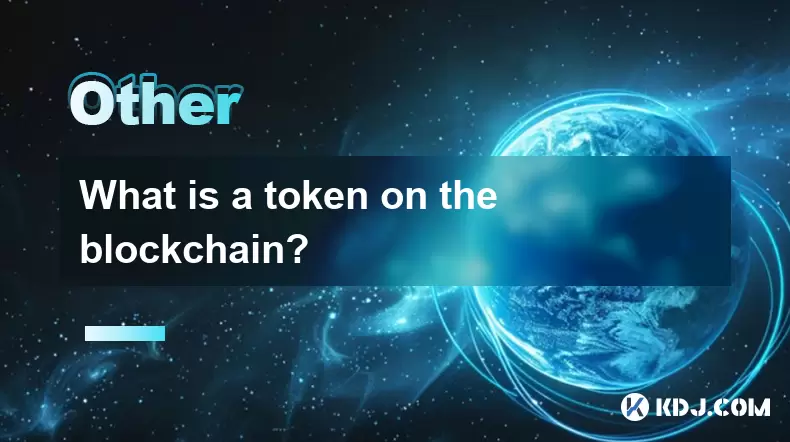
區塊鏈上的令牌是什麼?
2025-07-21 07:00:37
了解令牌的概念在區塊鏈技術領域中,令牌是區塊鍊網絡上存在的資產或實用程序的數字表示。與加密貨幣(例如Bitcoin或以太坊(以太坊)原產於其自己的區塊鏈,代幣是在現有的區塊鏈平台之上創建的。這些令牌可以代表各種形式的價值,包括但不限於貨幣,資產,權利或獲得服務。這些令牌的創建和管理通常受定義其規則和...
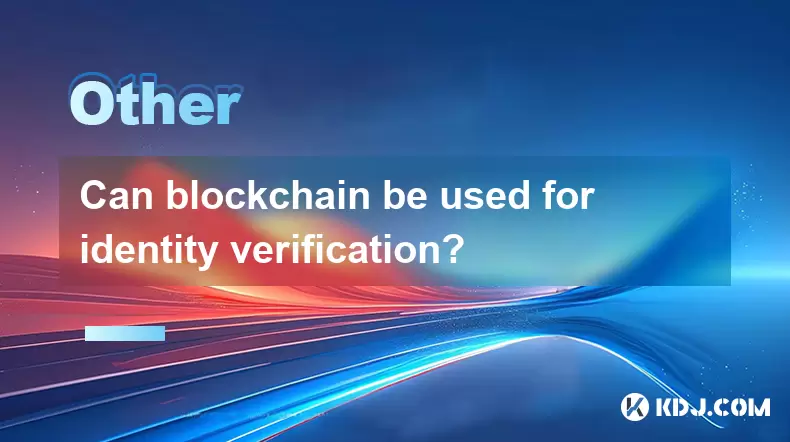
可以將區塊鏈用於身份驗證嗎?
2025-07-18 14:14:50
了解數字時代的身份驗證在現代數字景觀中,身份驗證已成為確保安全和信任在線互動的關鍵組成部分。傳統方法通常依靠集中系統,這些系統可能容易受到數據洩露和身份盜用的影響。區塊鏈技術的出現引入了一個分散的替代方案,該替代方案可以徹底改變身份的管理和認證。區塊鏈不變的分類帳系統允許創建防篡改記錄,使其成為身份...
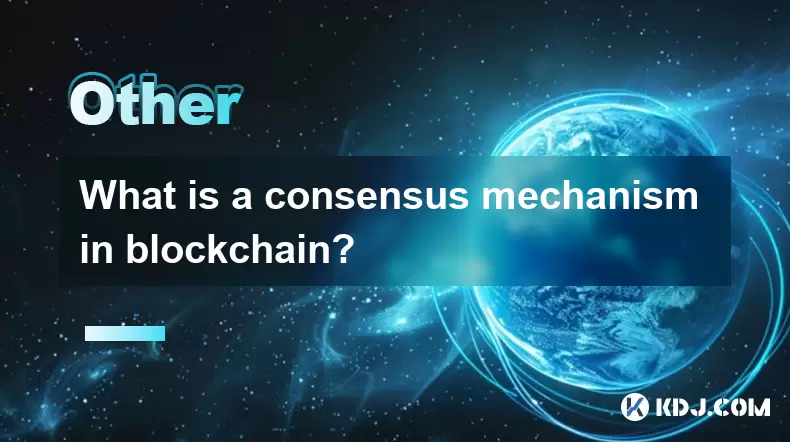
區塊鏈中的共識機制是什麼?
2025-07-21 03:01:19
了解共識機制的基礎知識共識機制是任何區塊鍊網絡的關鍵組成部分。它指的是節點(參與網絡的計算機)對交易的有效性和分類帳的當前狀態一致的過程。如果沒有中央權威監督操作,區塊鏈技術就依靠這些機制來確保分散參與者之間的信任和安全。在傳統金融系統中,中央銀行或金融機構驗證交易。但是,在像區塊鏈這樣的分散系統中...
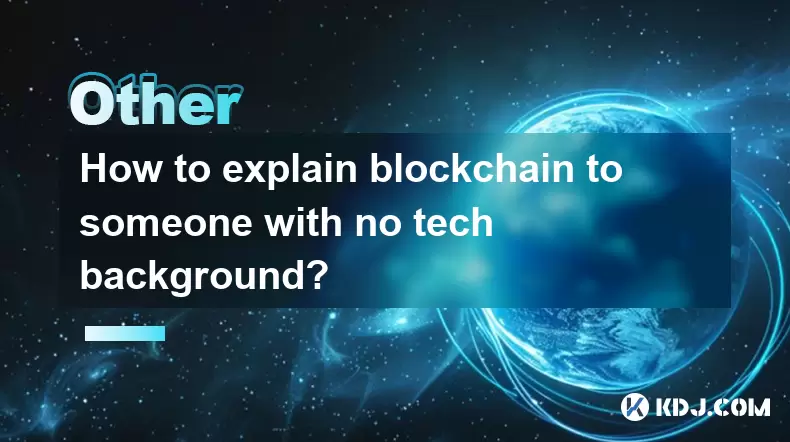
如何向沒有技術背景的人解釋區塊鏈?
2025-07-18 23:08:13
了解區塊鏈的基礎知識為了向沒有技術背景的人解釋區塊鏈,必須從簡單的類比開始,避免使用技術術語。將區塊鏈視為記錄交易的共享數字筆記本。本筆記本不歸任何一個人或組織所有。取而代之的是,它可供參與網絡中的每個人使用,任何人都可以檢查其中所寫的內容。每次發生事務時,它都會添加到一個塊中,一旦該塊已滿,它將連...

誰發明了區塊鏈技術?
2025-07-23 01:28:21
區塊鏈技術的起源區塊鏈技術並未來自單個發明家或機構。取而代之的是,它通過數十年來的一系列學術論文和加密進步而發展。在“區塊鏈”一詞廣泛認可之前,研究人員探索了基礎區塊鏈(例如分佈式分類帳,加密哈希和點對點網絡)的核心概念。這項技術最早的基礎之一是在1980年代和1990年代通過密碼學和計算機科學的工...
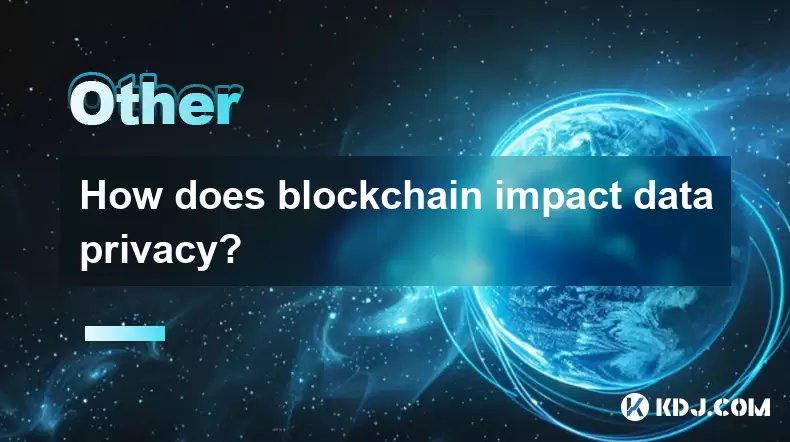
區塊鏈如何影響數據隱私?
2025-07-21 14:21:55
了解區塊鏈在數據隱私中的作用區塊鏈技術最初是作為Bitcoin等加密貨幣的基礎架構開發的,已演變為一個有力的工具,用於保護和管理數據。它的分散性質從根本上改變了數據的存儲,共享和訪問方式,這對數據隱私產生了重大影響。與傳統的集中式系統不同,單個實體控制數據,區塊鏈在節點網絡上分配它,從而使未經授權的...

區塊鏈上的令牌是什麼?
2025-07-21 07:00:37
了解令牌的概念在區塊鏈技術領域中,令牌是區塊鍊網絡上存在的資產或實用程序的數字表示。與加密貨幣(例如Bitcoin或以太坊(以太坊)原產於其自己的區塊鏈,代幣是在現有的區塊鏈平台之上創建的。這些令牌可以代表各種形式的價值,包括但不限於貨幣,資產,權利或獲得服務。這些令牌的創建和管理通常受定義其規則和...

可以將區塊鏈用於身份驗證嗎?
2025-07-18 14:14:50
了解數字時代的身份驗證在現代數字景觀中,身份驗證已成為確保安全和信任在線互動的關鍵組成部分。傳統方法通常依靠集中系統,這些系統可能容易受到數據洩露和身份盜用的影響。區塊鏈技術的出現引入了一個分散的替代方案,該替代方案可以徹底改變身份的管理和認證。區塊鏈不變的分類帳系統允許創建防篡改記錄,使其成為身份...

區塊鏈中的共識機制是什麼?
2025-07-21 03:01:19
了解共識機制的基礎知識共識機制是任何區塊鍊網絡的關鍵組成部分。它指的是節點(參與網絡的計算機)對交易的有效性和分類帳的當前狀態一致的過程。如果沒有中央權威監督操作,區塊鏈技術就依靠這些機制來確保分散參與者之間的信任和安全。在傳統金融系統中,中央銀行或金融機構驗證交易。但是,在像區塊鏈這樣的分散系統中...

如何向沒有技術背景的人解釋區塊鏈?
2025-07-18 23:08:13
了解區塊鏈的基礎知識為了向沒有技術背景的人解釋區塊鏈,必須從簡單的類比開始,避免使用技術術語。將區塊鏈視為記錄交易的共享數字筆記本。本筆記本不歸任何一個人或組織所有。取而代之的是,它可供參與網絡中的每個人使用,任何人都可以檢查其中所寫的內容。每次發生事務時,它都會添加到一個塊中,一旦該塊已滿,它將連...

誰發明了區塊鏈技術?
2025-07-23 01:28:21
區塊鏈技術的起源區塊鏈技術並未來自單個發明家或機構。取而代之的是,它通過數十年來的一系列學術論文和加密進步而發展。在“區塊鏈”一詞廣泛認可之前,研究人員探索了基礎區塊鏈(例如分佈式分類帳,加密哈希和點對點網絡)的核心概念。這項技術最早的基礎之一是在1980年代和1990年代通過密碼學和計算機科學的工...

區塊鏈如何影響數據隱私?
2025-07-21 14:21:55
了解區塊鏈在數據隱私中的作用區塊鏈技術最初是作為Bitcoin等加密貨幣的基礎架構開發的,已演變為一個有力的工具,用於保護和管理數據。它的分散性質從根本上改變了數據的存儲,共享和訪問方式,這對數據隱私產生了重大影響。與傳統的集中式系統不同,單個實體控制數據,區塊鏈在節點網絡上分配它,從而使未經授權的...
看所有文章

























































































